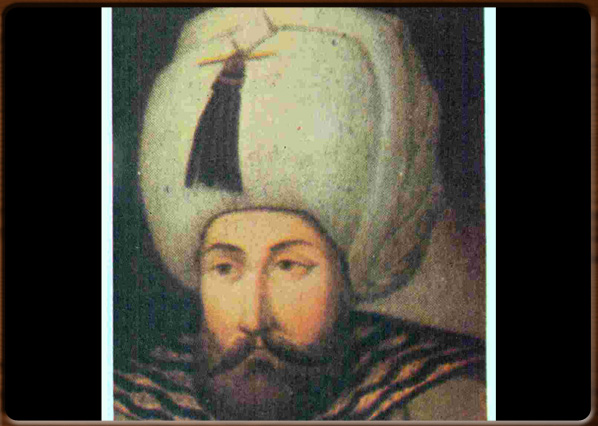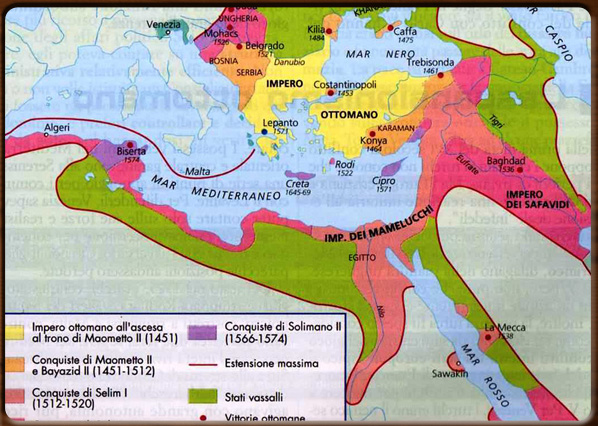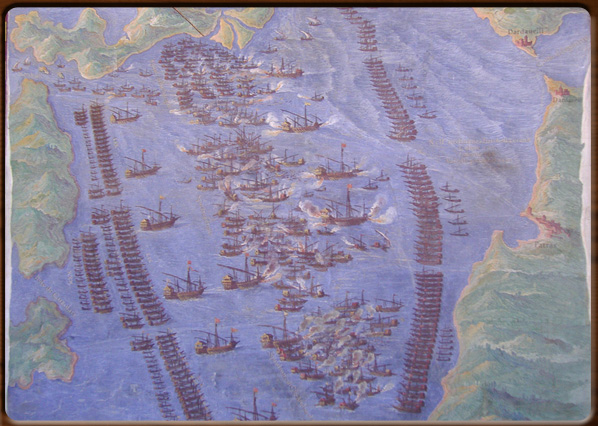
Soliman II (Selim II).

Ottoman Empire Map.

Battle of Lepanto, Vatican Museum.



No video
The term “Turchi” used by the Venetians referred to various Turkish peoples of Ural-Altaic language, who once lived in Northeast Asia and then, in the 6th Century, started emigrating towards the West and converted to Islam.
Over the years, West Europe and Venice in particular entered into strong trade and political even links with the Muslims.
Before the fall of Constantinople, the Mamelouk Turks had power and controlled trade in the eastern Mediterranean between Egypt and Syria. The Mamelouks had good relations with Venice. From the second half of the 15th Century onwards, the Ottoman Turks became Venice’s main commercial contacts in the Southeast Mediterranean.
The West gradually wanted to deepen its knowledge of the Turkish culture in parallel with its interest in the Byzantine world, although historical events such as the fall of Constantinople in 1453 and their uninterrupted series of military victories were the real driving force behind Italy and the rest of Europe’s curiosity about the Ottoman civilisation. When Suleiman II conquered Rhodes, Serbia and Hungary and then laid siege to Vienna in 1529, Turkey’s expansion towards the West and the conflict between Christianity and the Muslim world reached a dramatic climax. The fear of an Ottoman invasion created a reaction that led to anti-Turkish propaganda, reviving the idea of a new crusade that only died after the victory at Lepanto in 1571.
1300 - 1400 - - rev. 0.1.5